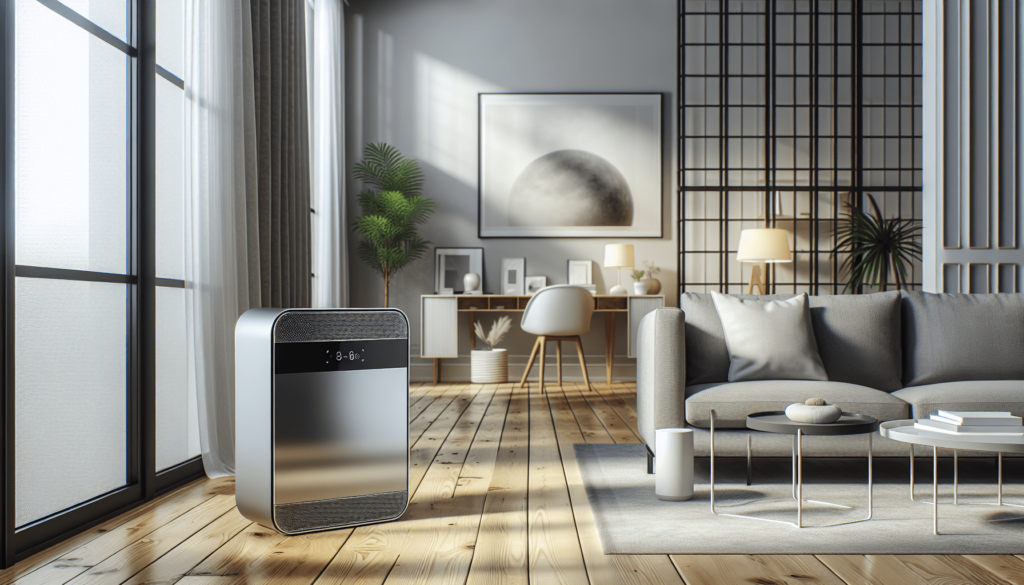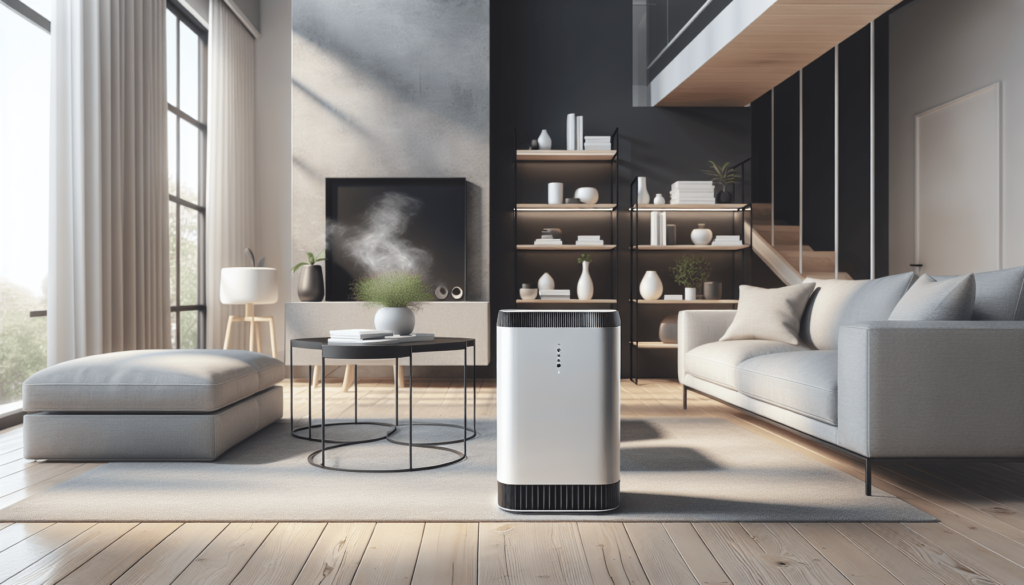Have you ever wondered if smart home devices could help you combat allergies? With the rapid advancement of home technology, the integration of smart devices has transcended mere convenience and ventured into health and wellness. Allergies, which can be triggered by anything from pollen to dust mites, often make their way into your living area, impacting your overall well-being. The good news is that smart home devices can assist in creating a healthier home environment, potentially reducing allergy symptoms.
What Are Allergies?
Allergies occur when your immune system reacts to a foreign substance, such as pollen, pet dander, or certain foods. This reaction can result in symptoms like sneezing, itchy eyes, and even respiratory issues. Managing allergies typically involves avoiding known triggers, but this is easier said than done, especially within the confines of your home.
Common Allergy Triggers at Home
Here are some of the common allergens that might be lurking in your living space:
| Allergen | Source |
|---|---|
| Pollen | Outdoor plants, trees |
| Dust mites | Mattresses, upholstered furniture |
| Pet dander | Cats, dogs, other furry pets |
| Mold spores | Bathrooms, kitchens, basements |
| Cockroach waste | Kitchens, areas with food |
Understanding what you’re up against is the first step in combating allergies at home. Fortunately, you have various smart home devices that can significantly reduce your exposure to these common allergens.
Smart Home Devices for Allergy Relief
Incorporating smart home devices can assist you in keeping allergens at bay more effectively. Below, we’ll outline some key devices and how they can contribute to an allergy-free home environment.
Smart Air Purifiers
An air purifier can filter out pollutants and allergens, making the air in your home cleaner. A smart air purifier can do even more by allowing you to monitor and control air quality in real-time through an app.
Features to Look For
When selecting a smart air purifier, consider the following features:
- HEPA Filters: Efficiently traps smaller particles.
- Activated Carbon Filters: Removes odors and VOCs (Volatile Organic Compounds).
- Real-time Air Quality Monitoring: Tracks air quality and patterns.
- Remote Control: Operate and monitor via smartphone or voice assistant.
- Auto Mode: Automatically adjusts settings based on air quality.
Smart Thermostats
Believe it or not, the temperature and humidity in your home can impact allergen levels. Dust mites, for example, thrive in humid conditions. A smart thermostat helps you maintain optimal temperature and humidity levels, reducing the proliferation of allergens.
Features to Look For
When choosing a smart thermostat, here are some features that can contribute to allergy relief:
- Humidity Control: Manage humidity levels to reduce dust mites and mold.
- Air Quality Sensors: Monitor indoor air quality.
- Smart Schedules: Set schedules based on your daily activities to maintain optimal conditions.
- Compatibility: Ensure it works with your HVAC system.
Smart Vacuum Cleaners
Regular cleaning is crucial in allergy management. A smart vacuum cleaner can ensure your home is cleaned consistently, even when you’re not at home.
Features to Look For
Here’s what to look for in a smart vacuum if you suffer from allergies:
- HEPA Filtration: Captures and contains 99.97% of allergens.
- Mapping Technology: Efficient cleaning pathways for comprehensive coverage.
- Scheduled Cleaning: Automate daily/weekly cleaning schedules.
- Voice and App Control: Easy to start, stop, and monitor cleaning sessions.
- Edge and Corner Cleaning: Ensure no spot is left untouched.

Advantages of Using Smart Home Devices for Allergy Control
So, why should you consider investing in smart home devices for allergy relief? Here are some benefits.
Improved Air Quality
The most obvious advantage is the improvement in air quality. Devices like smart air purifiers and thermostats work continuously to monitor and adjust factors that contribute to poor air quality.
Convenience and Ease of Control
Managing multiple devices through your smartphone or voice assistant can save you a lot of time and effort. Whether it’s adjusting your thermostat or starting your vacuum, control is at your fingertips.
Automation and Customization
Smart home devices allow for significant customization to suit your specific needs. You can set routines that automatically manage the environment of your home without manual intervention, which is especially beneficial if you have a busy schedule.
Energy Efficiency
Many smart devices are designed to be energy-efficient, helping you not only to maintain a healthier home environment but also to reduce your energy bill. For example, smart thermostats learn your habits and adjust heating and cooling accordingly, ensuring minimal energy waste.
Setting Up Your Smart Home Ecosystem
Ready to build your allergy-fighting smart home? Here’s how you can get started.
Step 1: Identify Your Needs
What are your primary allergens? Understanding this will guide you in selecting the right devices.
Step 2: Invest in Quality Devices
It’s tempting to opt for cheaper options, but investing in high-quality smart devices will pay off in the long run, especially regarding allergy relief.
Step 3: Integrate and Optimize
Once you have your devices, integrate them for seamless operation. Most smart home devices can be controlled via a central app or voice assistant, allowing for streamlined management.
Example Setup:
| Device | Task | Control Method |
|---|---|---|
| Smart Air Purifier | Continuous air quality monitoring and purification | Smartphone app |
| Smart Thermostat | Temperature and humidity control | Voice assistant/app |
| Smart Vacuum Cleaner | Regularly scheduled floor cleaning | App/schedule |
Step 4: Maintenance
Regularly maintaining your devices ensures they work efficiently. For example, replace air filters as recommended and empty vacuum cleaners promptly.
Step 5: Monitor and Adjust
Keep an eye on the performance of your devices. Most smart devices will alert you via apps if something needs attention, allowing you to keep everything running smoothly.

Practical Tips for Maximizing Effectiveness
To get the most out of your smart home devices, consider these practical tips.
Use Multi-Level Air Purification
Using multiple air purifiers strategically placed around your home can increase the overall air quality. Focus on high-traffic areas like the living room and bedroom for the best results.
Seal Entry Points
Allergens often enter your home through doors and windows. Ensure that these entry points are well-sealed to prevent outdoor allergens from making their way inside.
Regular Cleaning
Even with a smart vacuum cleaner, it’s essential to regularly clean your home. Dust and allergens can accumulate in areas that a vacuum may not reach, such as curtains and upholstery.
Manage Pet Dander
If you have pets, bathe and groom them regularly to minimize the amount of dander they shed. Using a HEPA-filter vacuum can help capture pet hair and dander more effectively.
Optimize Humidity Levels
Utilize the humidity control feature of your smart thermostat to maintain an optimal humidity level. Generally, keeping humidity levels below 50% can help reduce the presence of dust mites and mold spores.
Troubleshooting Common Issues
Despite the numerous benefits, you might face some issues while using smart home devices for allergy relief. Let’s address some common problems.
Connectivity Issues
Most smart devices rely on a stable internet connection to function correctly. Ensure your Wi-Fi signal is strong throughout your home. Sometimes, simply restarting the device or router can resolve connectivity issues.
Inaccurate Sensors
If you notice that the sensors on your smart devices are giving inaccurate readings, first ensure they are clean and free from obstructions. If the issue persists, a factory reset can sometimes resolve such problems.
Device Compatibility
Ensure your smart devices are compatible with each other and with the main control platform you plan to use (such as Google Home or Amazon Alexa). Incompatibility can lead to operational issues and reduced efficiency.
Future Trends in Smart Home Allergy Solutions
The world of smart home technology is continuously evolving, promising even more sophisticated solutions for allergy management.
AI and Machine Learning
Future smart devices are likely to incorporate advanced AI and machine learning algorithms to provide even more personalized solutions. These could include predicting allergy flare-ups based on historical data and local pollen forecasts.
Integrated Ecosystems
We can expect more integrated smart home ecosystems where devices communicate seamlessly with each other. For instance, your air purifier could work in tandem with the thermostat to optimize air quality and humidity levels dynamically.
Wearable Technology
Future advancements might also introduce wearable technology that syncs with your home devices. For example, a wearable could detect when you’re experiencing allergy symptoms and send commands to your smart home devices to mitigate the triggers.
Enhanced Sensing Technologies
New sensors are being developed that are more accurate and capable of detecting a broader range of pollutants and allergens. These advanced sensors could provide even better real-time insights and automatic adjustments to improve air quality.
Conclusion
Smart home devices are paving the way for a more comfortable and healthier living environment, especially for those suffering from allergies. By investing in the right smart home technology, you can effectively reduce allergens in your home, improve air quality, and enjoy the convenience of automated, hands-free management. Addressing your specific allergy triggers and taking advantage of the various devices and features available can make your home not just smart but also safe and comfortable.
Taking the steps outlined in this article can make a significant difference in your day-to-day comfort, providing relief from allergy symptoms and contributing to long-term well-being. Now that you’re armed with the knowledge on how to use smart home devices for allergy relief, you’re ready to make your living space a true sanctuary.
